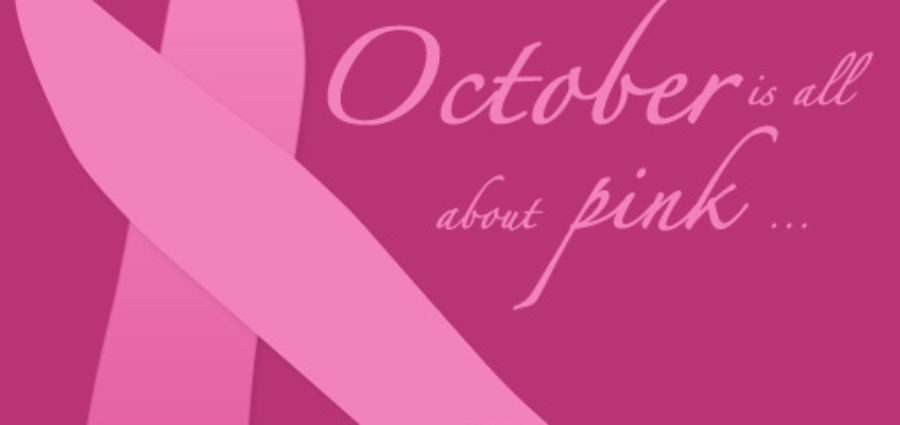October is Breast Cancer Awareness Month. This is a time when attention is brought to a disease that has impacted the lives of many women. Below are 13 facts every woman should know about breast cancer.
01. Breast cancer is a common cause of cancer in women. Aside from skin cancer, breast cancer is the most common cancer diagnosed in women and the number two cause of cancer deaths in women (lung cancer is number one).
02. Many women are diagnosed with and die from breast cancer each year. According to the American Cancer Society data for 2012, 1 in 8 women will develop breast cancer with an estimated 226,870 new cases of invasive breast cancer, and 63,300 new cases of in situ breast cancer (breast cancer that has not spread). It is expect that about 39,510 women will die from breast cancer in 2012.
03. All women are at risk for breast cancer. Although most breast cancers are diagnosed after the age of 50 years, young women are not entirely protected. About five percent of breast cancers occur in women under age 40, and for women in this age group, the incidence of breast cancer is higher among African American women compared to white women. Women who are diagnosed at younger ages may also have a family history or have a BRCA1 or BRCA2 genetic mutation. These genetic mutations carry an increased risk of both breast and ovarian cancers.
04. A family history of breast cancer increases your risk but most women who are diagnosed had no family history of the disease. Having a family history of breast cancer puts you at increased risk and may warrant earlier and more aggressive screening, but keep in mind that eight out of nine women who develop breast cancer had no family history of the disease.
05. Breast Cancer is the most common cancer in pregnant and post partum women. It is estimated that for every 100,000 cases of breast cancer diagnosed, about 13 of those cases are found in pregnant or postpartum women. Women who are pregnant or breast feeding may also have a more difficult time detecting the lump or other changes because their breast is more tender and enlarged.
06. African American women have a higher death rate from breast cancer. African American women are diagnosed with breast cancer less often than white women but their overall death rate is higher. This is believed to be a combination of cultural beliefs, late diagnosis, poor access to care, and genetics.
07. African American women are more likely to get triple negative breast cancer. Black women are three times more likely to be diagnosed with triple negative breast cancer, which tends to be more aggressive and difficult to treat. This type of breast cancer makes up about 10-20% of breast cancers and indicates that the cancer cells tested negative for estrogen receptors (ER-), progesterone receptors (PR-), and HER2 (HER2-). This means that the growth of the cancer is not supported by the hormones estrogen and progesterone or by the presence of too many HER2 receptors. These cancer cells will therefore not respond to hormonal therapy (such as tamoxifen or aromatase inhibitors) or therapies that target HER2 receptors, such as Herceptin (chemical name: trastuzumab). Triple-negative breast cancer is generally treated with surgery, radiation therapy, and/or chemotherapy.
08. The exact cause of breast cancer is unknown. Since the exact cause of breast cancer is unknown, the best defense in decreasing your risk of dying from this breast cancer is early detection followed by prompt effective treatment once a diagnosis is made. Studies have shown that women are more likely to survive breast cancer if they are diagnosed early. Early diagnosis allows healthcare providers to find the cancer when it is smaller and has not yet spread outside the breast, making it easier to treat. Early diagnosis include monthly self-breast exam, annual exam done by your healthcare provider, and mammogram at the appropriate age depending on your risk factors.
09. You can decrease your risk of breast cancer. Although the exact cause of breast cancer is unknown, certain factors have been associated with an increased incidence of the disease. These risk factors fall in the category of those you can and cannot change. Factors such as smoking, drinking alcohol, being overweight, and eating a poor diet can be changed. A person’s age, race, genetics, or family history can’t be changed. Experts suggest things that may help to decrease the risk of developing breast cancer include maintaining sensible lifestyle practices such as eating a balanced diet rich in fruits and vegetable while avoiding fats and alcohol, maintaining a healthy weight, and getting regular exercise.
10. You have a greater chance of recognizing the signs of breast cancer if you know what to look for. Since the breast can be dense and feel lumpy, you are encouraged to look for a lump that feels different – often described as discovering a pebble in your oat meal. Cancer lump are more likely to be hard, painless, and does not easily move. Other things to look for include puckering, dimpling, nipple turning inward, discharge from the breast, flattening, indentation, redness, scaliness, and skin thickening. If you find a change in your breast, immediately make an appointment to have it further evaluated by your health care provider.
11. Breast Cancer Screening includes monthly self-breast exam, annual clinical exam, and mammography. One of the main goals of breast cancer screening is to find the cancer before the woman actually develops symptoms. This allows for early diagnosis and provides the best chance for successful treatment. The National Cancer Institute recommends that women age 40 and older have screening mammograms every one to two years. Depending on factors such as family history and your general health, your doctor may recommend a mammogram before age 40 or more often.
12. The earlier your cancer is detected, the greater your chance of survival. The five year survival rate refers to the number of patients who live for at least five years after their cancer is found. There is a 93% 5 year survival rate for women diagnosed with stage 0 breast cancer (the earliest stage) and a 15% survival rate for those with stage 4 (the most advanced stage).
13. A diagnosis of breast cancer is not a death sentence. There is an estimated 2 ½ million survivors in the United States but the key is catching it early and getting good follow up care.
If you live in the NY area, you may receive free mammograms from the mobile units with schedules in all the boroughs. The schedule may be found here. Also, resources to help you create an early detection plan which allow you to receive reminders to perform breast self-exam, schedule your clinical breast exam and mammogram based on your age and health history may be found at sites such as the National Breast Cancer foundation here.
Disclaimer: The information presented is intended for educational purpose only and is not intended as a substitute for professional medical advice, diagnosis, or treatment.








